The whole set of bronze textiles unearthed from the Laosan Laotou site also found the tomb of craftsmen!
Author:Cover news Time:2022.06.18
Cover reporter Dai Zhuxin Photography Yang Bo
Part of the picture based on Chengdu Cultural Relics and Archeology Research Institute
Thousands of years ago, how did humans find such a place of settlement and created a unique bronze civilization in the salt source basin in the east foot of the Qinghai -Tibet Plateau? Thousands of years later, when many different shapes and mysterious bronze wares saw the sun, they slowly appeared the appearance of the loss of civilization before.
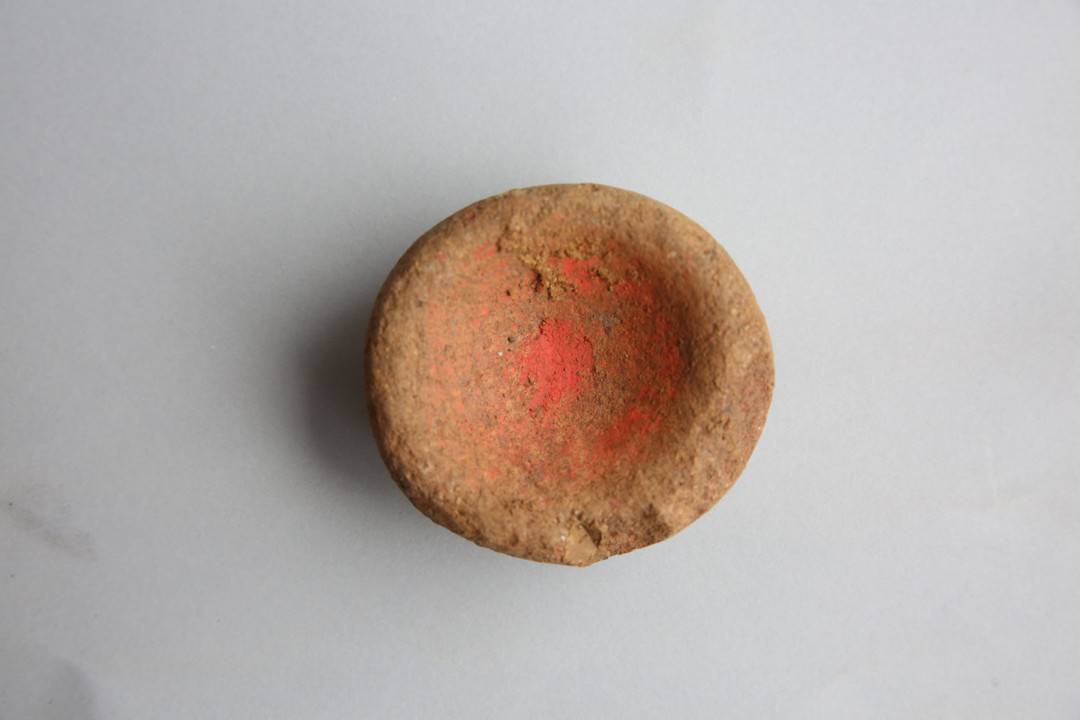
M460 unearthed stone mortar
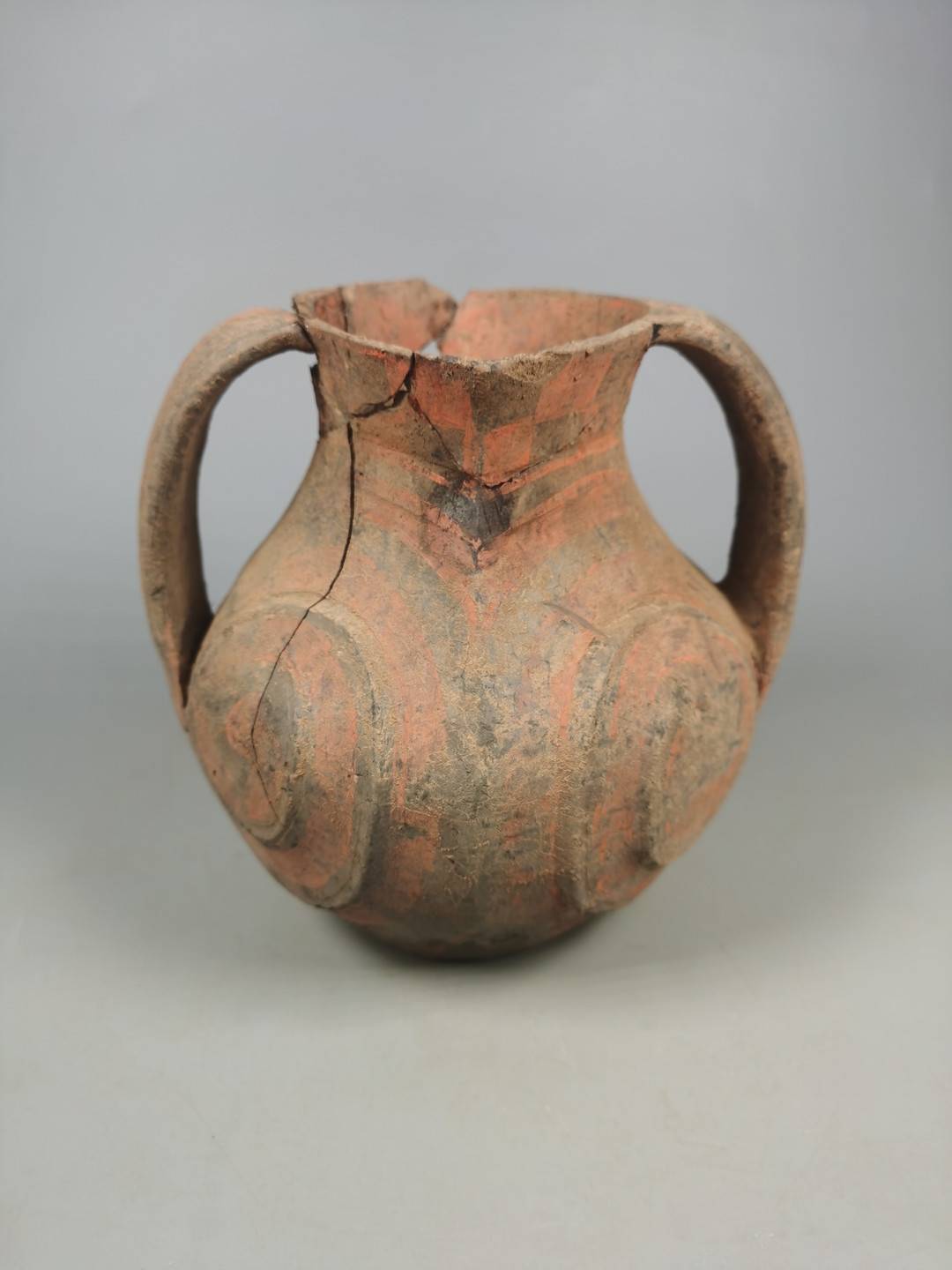
Color pottery big two ears
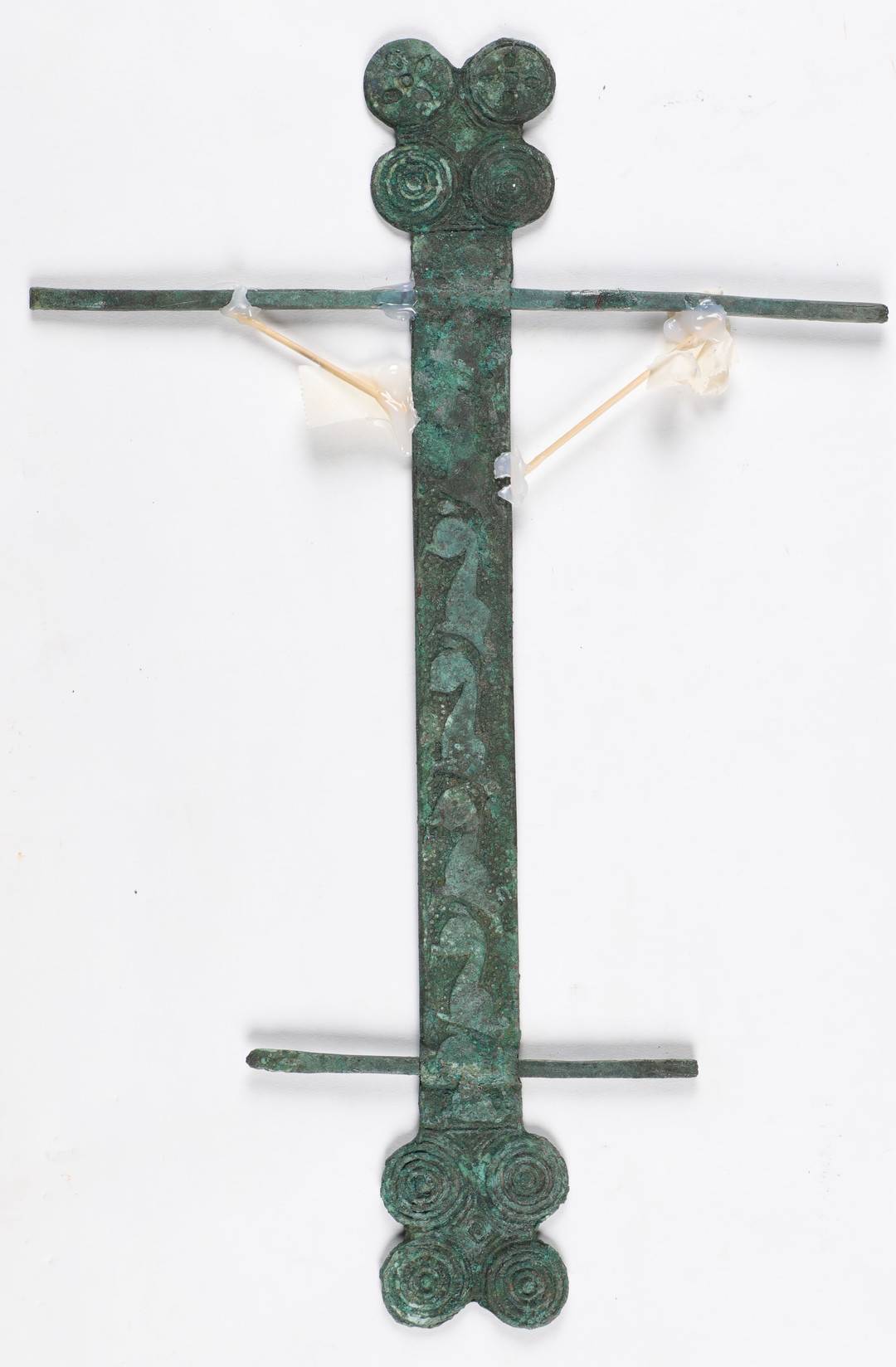
M13 unearthed copper workers
On June 18th, the first academic seminar of the Yanyuan Bronze Culture and the interaction and exchanges of various ethnic groups was held in Yanyuan County, Ganzi Prefecture, Sichuan Province. Dingye Ancient Civilization started discussions.
The reporter learned that a number of regional characteristics were excavated at the old leader site of Yanyuan. Among them, the entire set of bronze textile equipment is the most complete bronze waist machine currently found in southwestern China. The branches are even more highly worshiped by the unique belief in Yanyuan bronze culture.

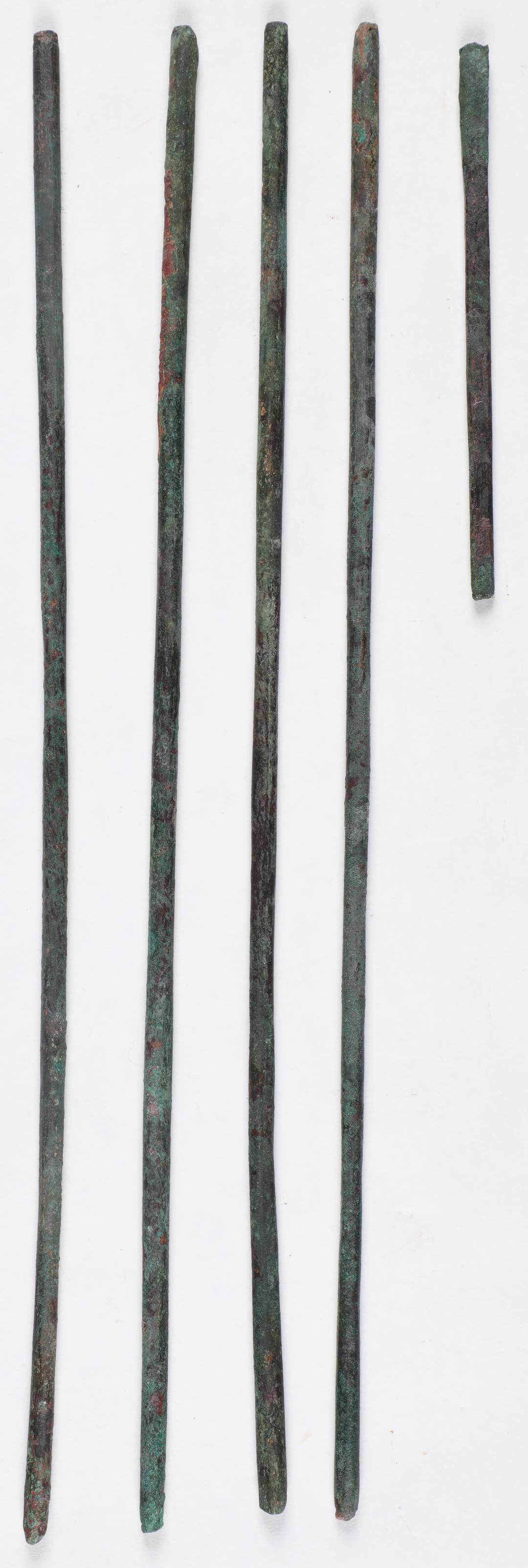
M13 unearthed copper divisions of meridian sticks
Participating experts believe that an important breakthrough obtained by the archeology of the old leader site in Yanyuan County, Sichuan Province has been formed in the Bronze Age in the past three years.
There are many types of burial relics for rich burials
At the seminar, Tian Jianbo, the head of the Jianlianglou site of the Chengdu Cultural Relics and Archeology Research Institute, introduced the excavation harvest of the old leader site from 2020 to 2022.
The fourth rescue excavation of the old leader site in Yanyuan County began in April 2020. As of mid -June 2022, more than 1,100 tombs had been cleaned up from the late Western Han Dynasty, and more than 5,000 various relics were unearthed.
Among them, there are nearly 2,000 pieces of pottery, more than 1,700 bronze, more than 100 ironware, more than 20 gold and silverware, nearly 700 pieces of stone artifacts, more than 180 pieces of jade, more than 120 glassware, bone (including shell) more than 100 pieces of more than 100 pieces (shells) Essence
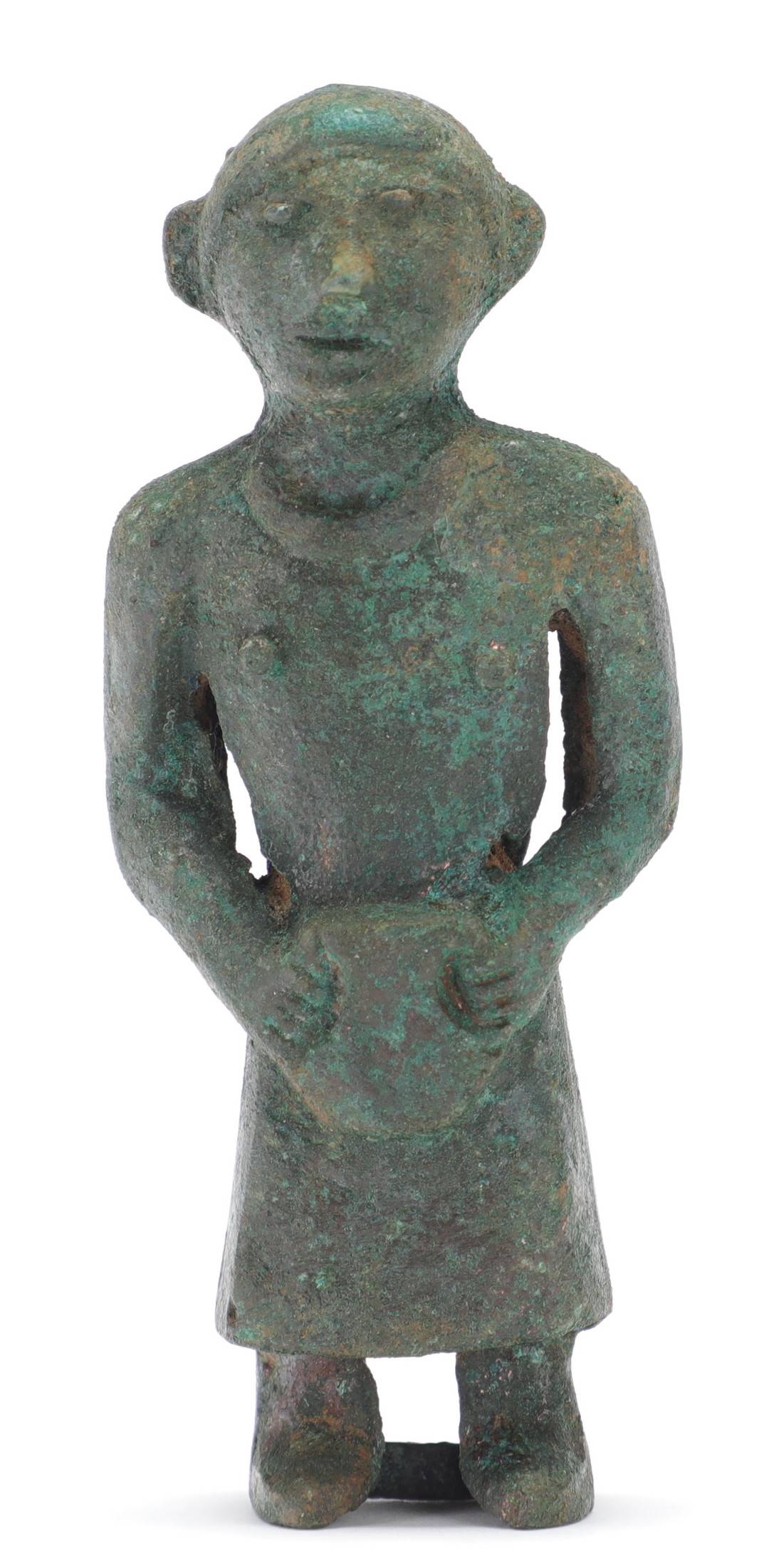
M57 unearthed copper people

M13 unearthed copper scroll menstrual axis
This excavation unearthed a group of regional characteristics. Among them, the entire set of bronze textile equipment is the most complete bronze waist machine currently found in southwestern China. The three -wheeled bronze carriage is also the earliest three -wheeled carriage physical model found in China. First, the bronze branches with different shapes and a variety of types highlight the unique belief worship of salt source bronze culture.
It is understood that since 1987, the Chengdu Cultural Relics and Archeology Research Institute and the Sichuan Provincial Institute of Cultural Relics and Archeology, the Liangshan Yi Autonomous Prefecture Museum and the Yanyuan County Cultural Relics Management Institute have carried out four rescue excavations on the old leader sites.
For the first time in the southwest region, the owner of the tomb of bronze textile tools is prominent
At the seminar, Tian Jianbo believed that the Yanyuan Last Latest Site formed early and a long duration. According to the unearthed utensils and the existing annual measurement data, the tombs of the old leader site can be preliminarily divided into business to the Western Zhou Dynasty, the Spring and Autumn Period, and the early period of the Western Han Dynasty.
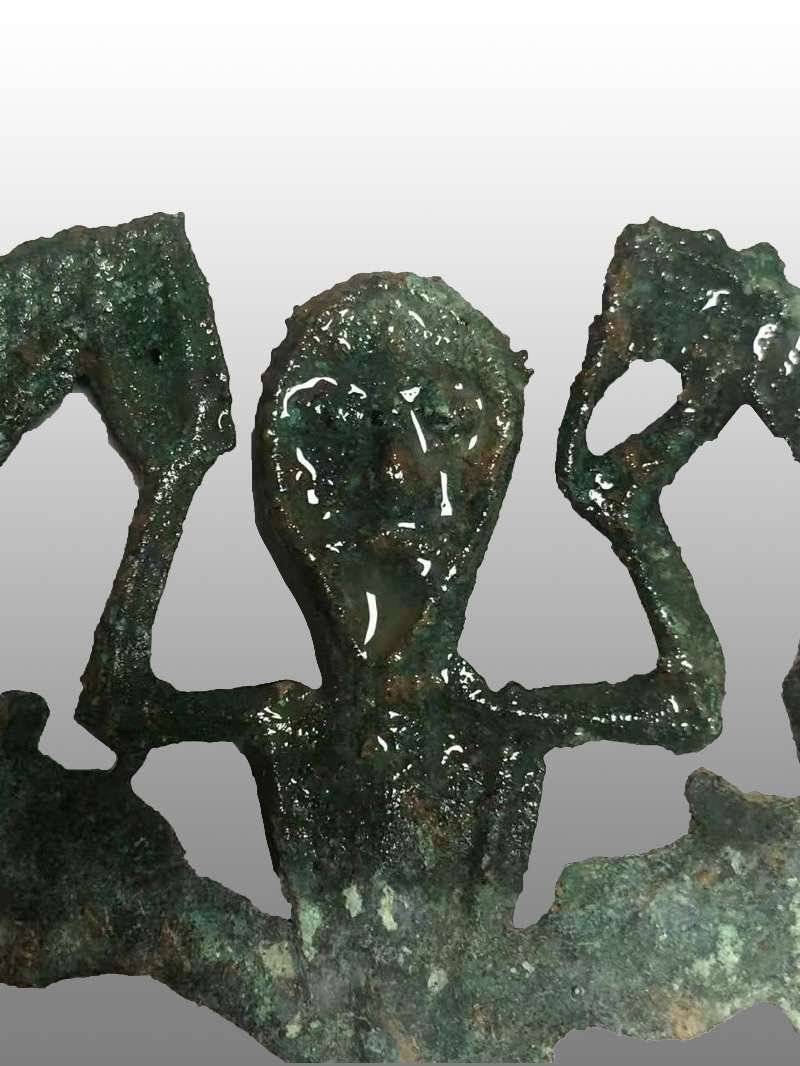
M826 copper branches -shaped portrait close -up (person as a opening)

M333 unearthed Tongge
It is worth mentioning that the M13 in the middle and late Warring States was one of the largest and most graded tombs in the tomb. 41 various types of utensils were unearthed in the tomb, mostly placed on the coffin cover, including a set of bronze textile tools, including the workers, latitude knife, scroll axis, roll axis, meridian sticks, and waist protection. The tomb was also unearthed with large double -ear cans.
The combination of bronze textile tools and painted large double -ear tanks is only found in the highest grave grave of the old dragon -headed cemetery, and the same combination is also seen in M135. The tomb owners of the two tombs are very prominent in the old dragon's cemetery and may belong to the ruling class of the old leaders.
The M57 is a large -scale tomb with a lid. The tomb has an unique group of copper wares, including copper spoons, copper cases, copper people, and copper carriages. The copper spoon was placed on the copper case, and the copper case was placed on the copper carriage, and it was living in the carriage.
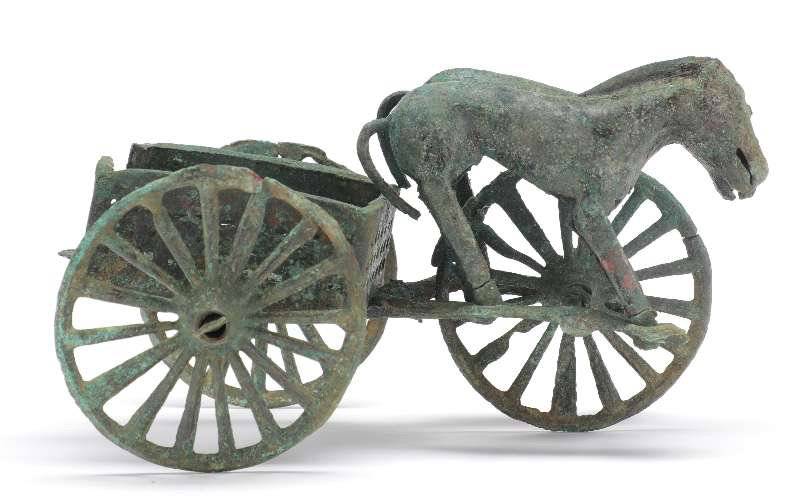
M57 unearthed copper carriage
The bronze portrait unearthed from the tomb stands standing, wearing a round hat to wrap her ears, a broadband shape on the neck, holding a pair of ear tanks in front of the hip, the upper body is exposed, the lower body is in a half skirt, the feet step on the tip of the tip Head shoes. The dual -ear tank is a typical pottery in the old dragon's cemetery.
Craftsman's tomb discovery revealed the mystery of salt source bronze casting
One of the focal points discussed at the seminar is where the unique bronze wares unearthed from the old leader site cast? This has always been a mystery, which provides us with clues.
Ten groups of Shi Fan were unearthed in the tomb M174 during the Spring and Autumn Period, and the pottery bags and pottery drum air ducts that could be used for coppermaking. Typical bronze wares indicate that some of the copper wares of the old faucet site are cast locally, and the tomb owner of the M174 may be a bronze castor. M174's Shi Fan is a common model, showing more mature casting technology.
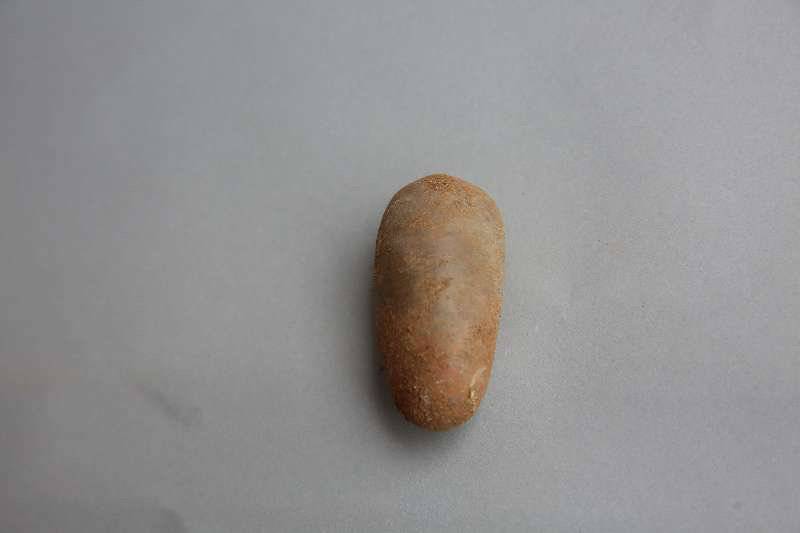
M460 unearthed stone pestle
Tian Jianbo said that the tomb similar to the M174 was found in the old leader's cemetery. It was still very rare in the southwestern Sichuan area. Similar castles were found in Eurasian grasslands, northwestern China, southwest, and Southeast Asia. The discovery fully reflects the role of the Yanyuan Basin in the north -south cultural exchange of Eurasia.
In addition to the tomb of the castle, a number of suspected cinnabar craftsmen have been unearthed in the cemetery. This type of tomb is generally buried with stone pestle and stone mortar and other tools for grinding cinnabar. Its owner may be craftsmen who grind cinnabar. There were some cinnabar at the bottom of the tomb. At that time, the reflection of cinnabar burial customs reflected the popular style of the crowd. The different shapes of the branches reflect the unique beliefs of the local ethnic group
In the exhibition of the day, the unique, different shapes, a variety of types, and the theme of human and beasts attracted the attention of experts. Bronze branches are the most characteristic bronze elements of the old leader. God is the most common theme of such bronze -branches.
M826 copper branches (one person and eight horses)
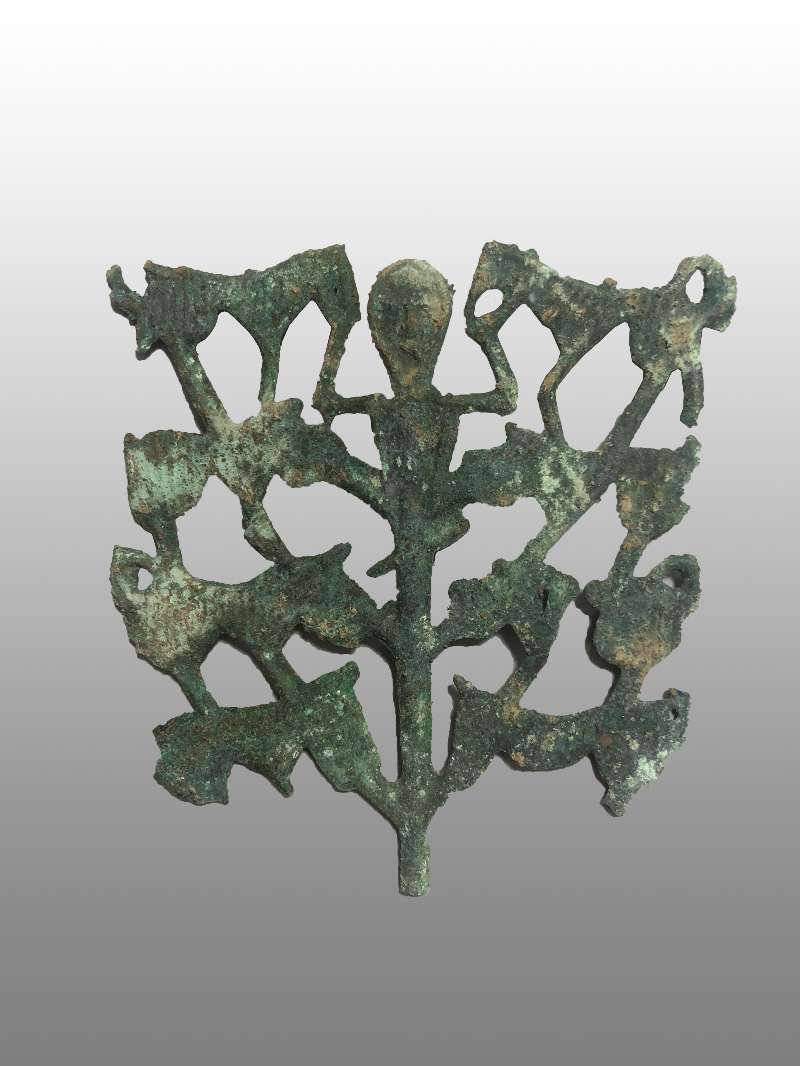
M1056 unearthed copper branches (one person double horse)
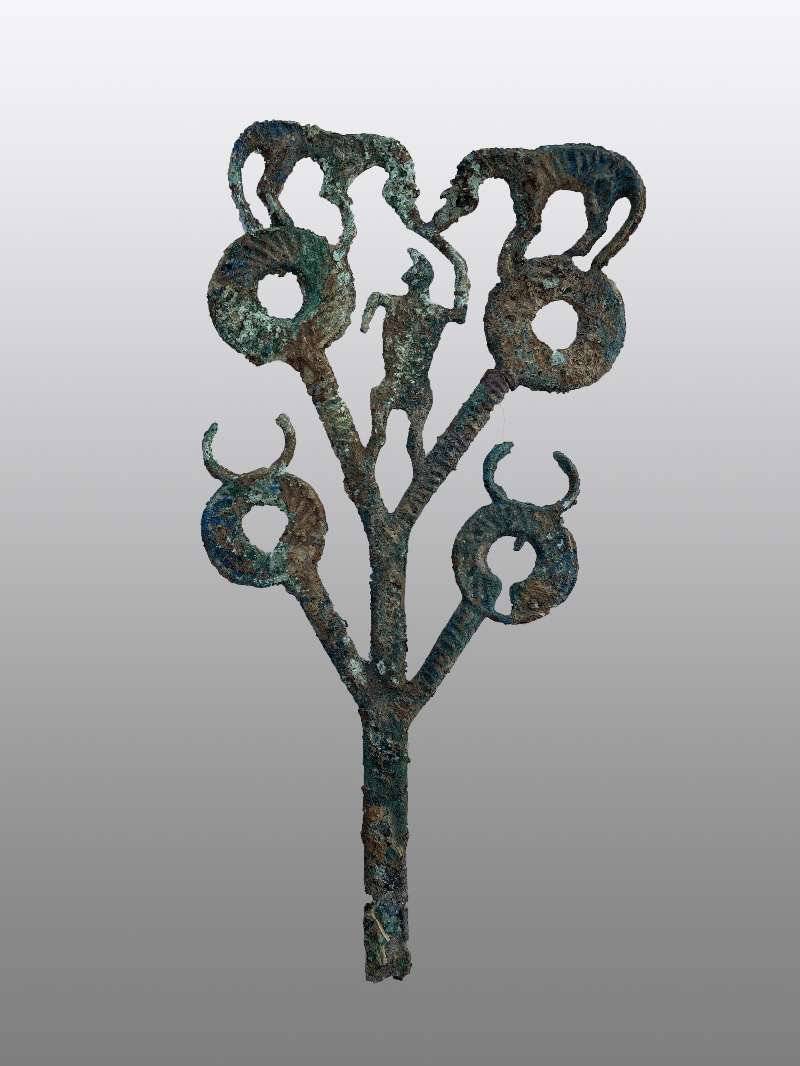
In recent years, a number of new animals have been found, such as pigs, deer, and crawled animals. It is an important feature of Yanyuan bronze culture separated from the surrounding bronze culture, and also reflects the unique funeral customs and belief worship of the old leaders.
In addition, the Shangma's wind of Yanyuan Bronze Culture also attracted the attention of the participating experts. The old leader's site found a large number of relics related to the horse, mainly including mackerel and horses, and other carriages and copper horses.
The martyrs include the whole horse and the horse's head, which is generally found in large tombs. The K12 on the south side of the M333 is the separate horse pit. It is the first time that it is discovered. Horse horses are common in large and medium -sized tombs, mainly including horses, horses, copper bells, savings and various decorations. The customs of burial horses and horses are more common in the grassland of northern China and Eurasia. The still wind of the Sanyuan Basin shows the strong northern grassland cultural style. There are also small horse decorations, Lianzhu and handle bronze mirrors unearthed at the old leader site, which is also the mark of the culture of the northern grassland culture.
The history of the regional civilization that shows a diversified regional civilization empirical in the southwestern ethnic group communication and exchanges and integration
Zhou Zhiqing, deputy dean of the Chengdu Cultural Relics and Archeology Research Institute and the head of the archaeological project of the old dragon head site, said in his speech that the excavation of the old dragon head site not only improved the understanding of the cultural connotation of the tomb, the characteristics of the burial utensils, the funeral customs and other cultural connotations of the site. , Clarify the layout and formation process of the site, and initially build a framework from the late period of the Shang Dynasty to the Western Han Dynasty and the cultural development framework of the Yanyuan Basin. The ruler and reference system.
The Yanyuan Basin is an important node on the cultural exchange and crowd migration channels of the east and south of the Qinghai -Tibet Plateau. It is also an important part of the Tibetan Yi Corridor in the ethnicology. The special geographical and cultural location makes the ancient culture of the region present the characteristics of diversity and composite.
Yanyuan Laotou Site highlights the characteristics of Yanyuan Bronze Culture's unique, compatible, and diverse integration, and enriches the pattern and cultural connotation of Chinese civilization and diversity. The excavation of this site has become a key key to studying the intersection, integration of the diversified civilization of the East of the Qinghai -Tibet Plateau, and evolution, and has extremely high academic value.
"The old faucet site continues from the late Shang Dynasty to the early Western Han Dynasty. It is an important archeological discovery of the Cultural Exchange Corridor of the Birong Mountains in the Bronze Age." Zhou Zhiqing said that the excavation of the old dragon head site is to build the history of bronze civilization that builds the salt source basin and explore salt salt The funeral customs, social organization structure, metallurgical technology, and cultural exchanges between southwestern China and northern China, Eurasia, and Southeast Asia are of great significance.
M50 unearthed gold jewelry
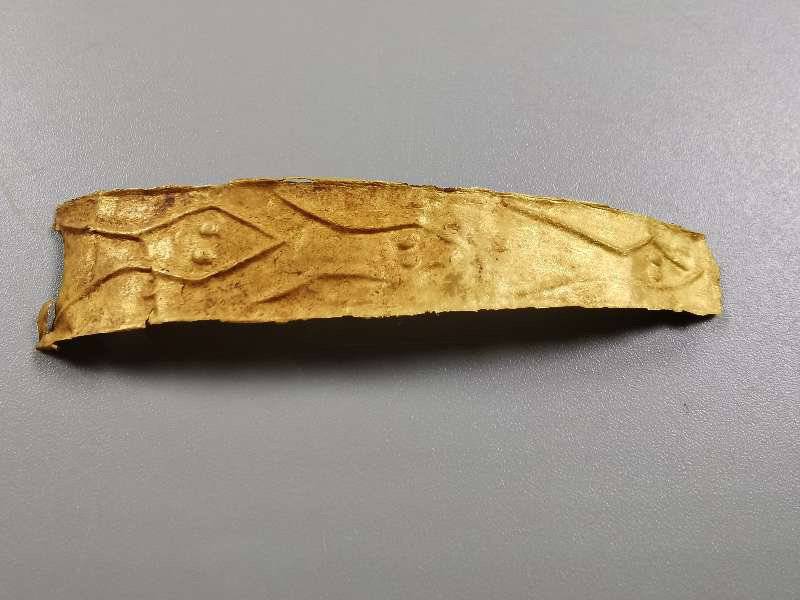
[If you have news clues, please report to us. Report WeChat Follow: IHXDSB, Report QQ: 3386405712]
- END -
Poetry is my family business- "Calling Dream Cup" consultant Wu Shuoxian
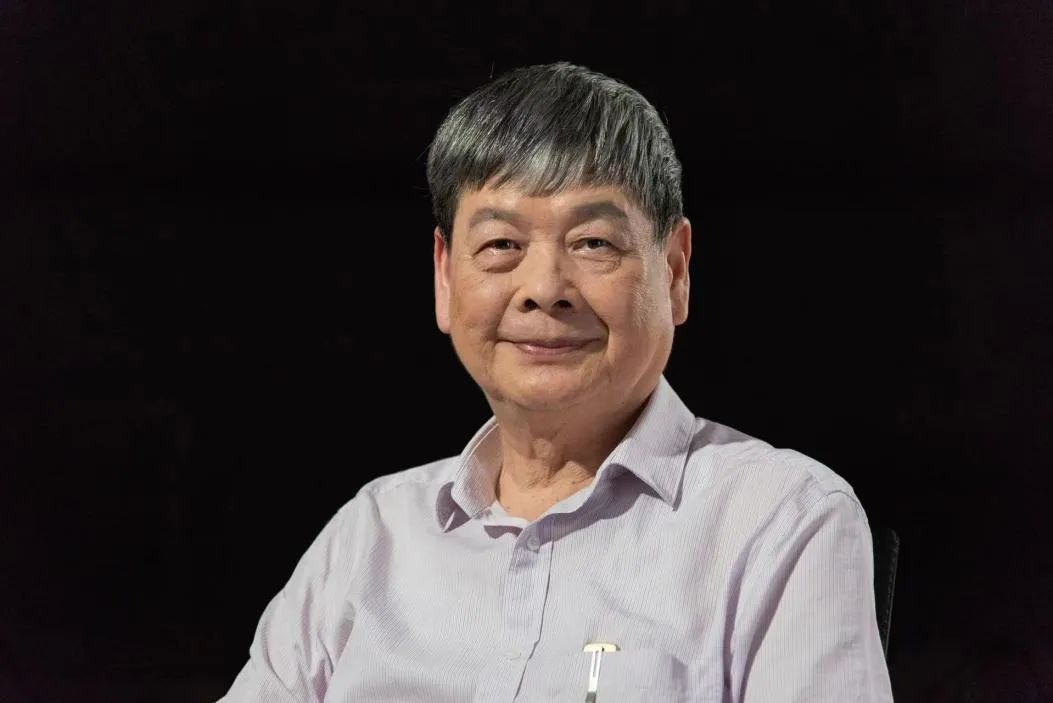
Text | Call Dream Cup Organizing CommitteeHe is versatile, writing poems and writin...
Humanities Society Coffee Shop opened live broadcast: a literary class with information explosion

On June 24th, the People's Literature Publishing House self -operated coffee shop,...